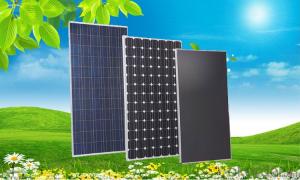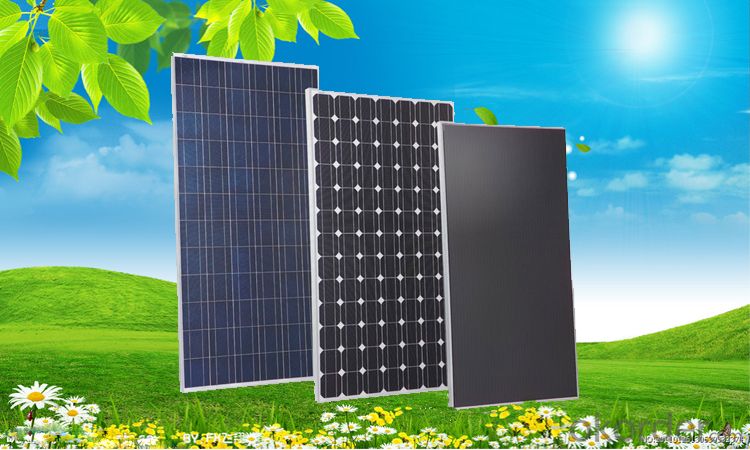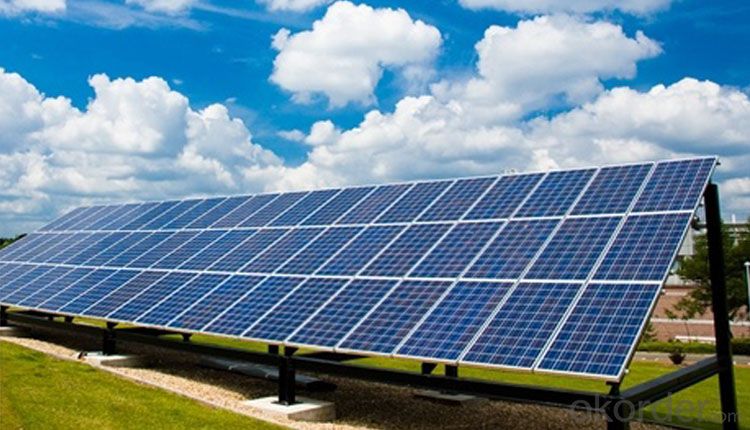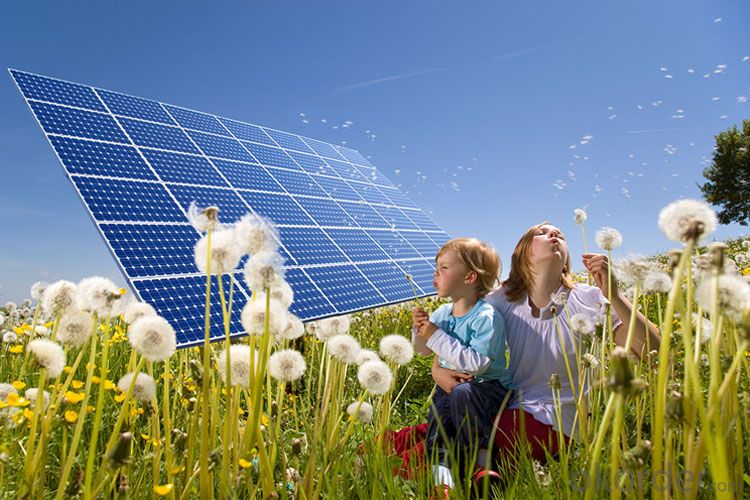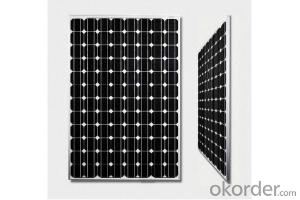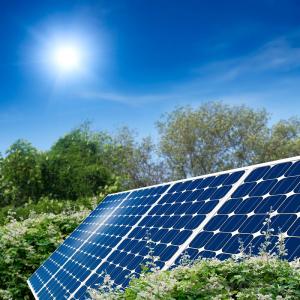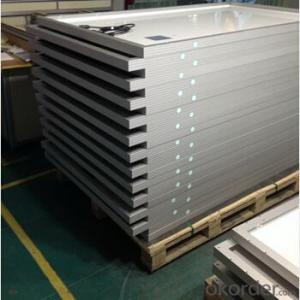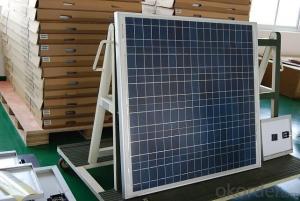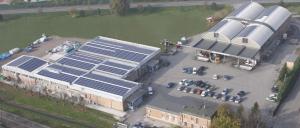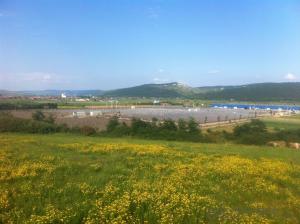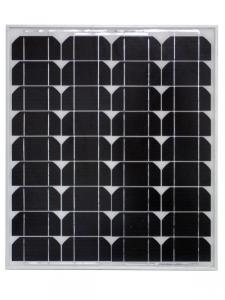Solar Panels Mini - CNBM Solar Monocrystalline 156mm Series 80W
- Loading Port:
- Shanghai
- Payment Terms:
- TT OR LC
- Min Order Qty:
- 1000 watt
- Supply Capability:
- 20000000 watt/month
OKorder Service Pledge
OKorder Financial Service
You Might Also Like
Specification
Materials
Silicon
Guarantee
12 yrs free from defects in materials and workmanship
No less than 90% within 10yrs and no less than 80% within 25yrs
TUV(IEC61215&IEC61730), CE, UL
Application
Photovoltaic/ solar/ green energy/ energy saving
Descriptions
1.High efficiency crystalline silicon solar cell. Even if under the weak light, the solar module can produce maximum power output.
2.Tempered glass (toughened glass): Anti-reflecting coating and high transmission rate glass increase the power output and mechanical strength of solar module.
3. EVA and TPT: Using high quality EVA and TPT to prevent destroying and water.
4. AI frame: Without screw, rner connection. 6 holes on the frame can be installed easily.
5. Junction box: Multi function junction box with water proof.
6. Long lifetime: ≥25 years; Less power decrease.
7. Good performance of preventing from atrocious weather such as wind and hails.
8. Resisting moisture and etching effectively, not effected by geology.
9. The certificate issued by international authority: UL, TUV, IEC, CE.
Packaging Details
26pcs/pallet, 28pallets/ 40HQ
Our solar panels are packed in cartons, and then pallet.
Shipping by sea or by air are both ok, it up to customer’s chose.
We’d like to inquiry the freight cost for customer after be informed exact quantity and destination address.
CNBM International Corporation is a professional solar panel manufacturer in China for CNBM brand . Silicon panel ( silicon module), as our main product, has high quality and good service. Our products are very popular in Europe, Australia, England, Middle East, Mexico, Argentina, Chili, Singapore and Africa.Furthermore, our products have gained international authorized certificates like TUV, UL and CE.
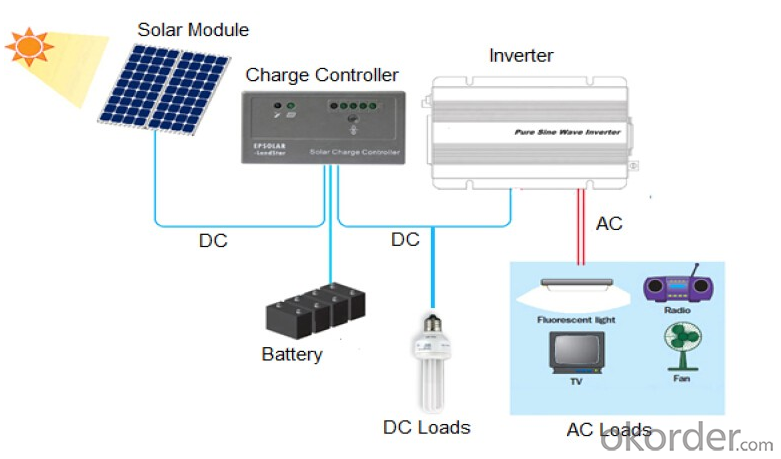
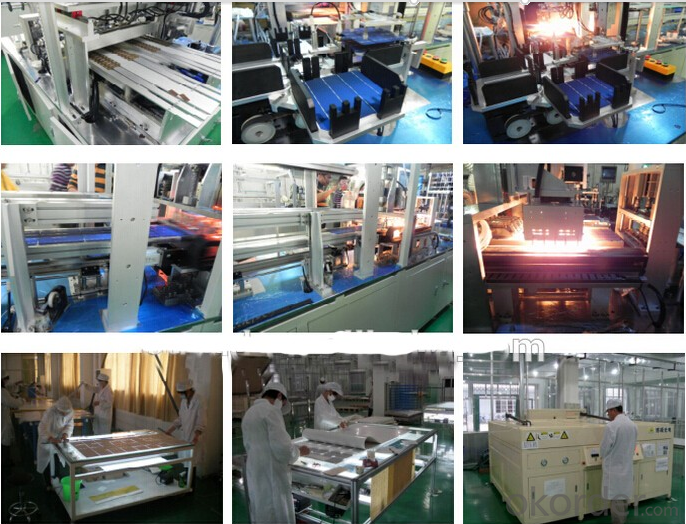

Why Choose Us
A. Professional Manufacturers , Strict quality control & power classification Silicon Solar PV Module
B. 100% A grade solar cell with Positive tolerance power range.
C. High Conversion Efficiency , High transmission rate , low iron tempered Anti-reflecting/coating film 3.2mm glass
D. Anti-aging & high visosity EVA
E. high frame resistant & Double-sided fluorine TPT
F. Anodized aluminum alloy high thickness frame
G. 3 or 6 bypass diodes , 90mm 4m2 cable , MC4 connectors & waterproof junction box
H. Long life, Easy installation, high wind & hail impact resistance
I. Be resistant to atmospheric exposure & effects of delamination
J. ISO9001:2008/ISO14001:2004/OHSAS18001:2007/ CE /TUV/CEC/ IEC/EN61215 IEC/EN61730/CHUBB INSURANCE
K. 10Years Manufacturing Quality Warranty , 10Years 90% Power output Warranty, 25Years 80% Power output Warranty
- Q: If I wanted to put some solar panels on my roof, how many would i need and how many watts would they have to be to be able to power my whole house?
- all depend to the surface of your solar panel
- Q: So how does a solar panel work? Where does the energy get stored in? How much does one cost for a small 2 family home? How much money would we save on electricity?
- These are all good questions but they are open Items. Solar panels work by the reaction of certain elements upon exposure to sunlight.The amount of power generated is Dependant on at least three factors; The size of the solar panel, the type of solar cells used (The specific element and the cell construction) and the amount of sunlight to which the panels are exposed. The answers to these questions may indicate how much you will save (How much does your electricity now cost per KWH and how much do you use in the two family house} and if solar is feasible in your location. You should probable contact at least three of the local companies that do solar installations and listen (with a cynical ear) to their presentations. They are all trying to sell you their product but you after listening to more than one presentation can sort through the BS. Also you might contact your present power provider. They should be able to give you some good advice on alternative energy availability. Good Luck DOCSRG
- Q: Can solar panels be installed on a pergola or gazebo structure?
- Yes, solar panels can be installed on a pergola or gazebo structure. These structures provide a suitable surface for mounting solar panels and can help maximize the exposure to sunlight, ultimately increasing the energy production of the panels. It is important to ensure that the pergola or gazebo is structurally sound and properly designed to support the weight and wind load of the solar panels. Additionally, the orientation and angle of the panels should be optimized for the specific location to maximize energy generation.
- Q: Can solar panels be used for powering a theme park or amusement park?
- Yes, solar panels can be used to power a theme park or amusement park. They can provide a sustainable and renewable source of energy to meet the power needs of various attractions, rides, and facilities within the park. By harnessing sunlight, solar panels can generate electricity that can be used directly or stored in batteries for later use. This not only reduces the park's carbon footprint but also helps to lower operational costs in the long run.
- Q: Can solar panels be used for powering a water treatment plant?
- Yes, solar panels can be used to power a water treatment plant. Solar energy can be harnessed and converted into electricity to provide a sustainable and renewable power source for operating the various equipment and processes involved in water treatment. By utilizing solar panels, water treatment plants can reduce their dependence on traditional energy sources and contribute to a more environmentally friendly and cost-effective operation.
- Q: I want to also know if the 0 watt rating on the solar panel is 0 watts per day or is it constantly adding 0 watts? Is there a time which the 0 watts is being added like 0 watts per second or 0 watts per minute and so on?
- a 0w solar panel means at peak efficiency ( high noon, panel pointed flat at the sun, hitting it at 90 degrees), you will get 0 watts (at any given second). Watts = volts x amps a 2volt battery needs an incoming current of at least 3 volts to charge it; 3.5 volts is better. so if the output VOLTAGE of the panel is less than 3 volts it wont do anything. Even if it is, 0 / 3.5 = .74 amp.( three quarters). It will take forever and a day to charge a deeply discharged deep cycle battery.......... consider that a small 0v battery charger is putting out 3-5 amps ( or 3 x 0 =330 Watts) and the alternator on a car is putting out 20 to 50 amps at 4 volts ( 280 to 730 Watts).
- Q: Can solar panels be installed on a military base?
- Yes, solar panels can be installed on a military base. In fact, many military bases around the world have already implemented solar energy systems as part of their efforts to reduce dependence on fossil fuels and increase sustainability. Solar panels can be installed on rooftops, parking lots, or open grounds of military bases to generate clean renewable energy.
- Q: Can solar panels be used for powering a hotel or hospitality establishment?
- Yes, solar panels can definitely be used for powering a hotel or hospitality establishment. Solar energy is a clean and sustainable source of power, and installing solar panels can significantly reduce energy costs for the establishment. Additionally, hotels often have large rooftops or open spaces that are suitable for installing solar panels, making it a practical and efficient solution for meeting their energy needs.
- Q: how to market solar energy products?
- It depends upon your product. If it is a solar panel, I want to know if it is a photovoltaic panel or a thermal panel. If you don't know enough to know the difference for your question it might be somewhat difficult to suggest others should buy them. Products have to be marketed to a need either already felt or not so apparent. Photovoltaic panels supply an electric need and will offset electrical usage or may supply the grid if there is excess power. A discussion of payback periods including property values will be needed in any event. Thermal panels supply heat and hot water. They are more efficient than photovoltaic panels and will give faster payback times. (are cheaper) If you are a bit more specific more information may be possible.
- Q: i just took a trip to florida, they are cutting down anything that doesnt float and putting up buildings. Most of these cost a bundle, bill gates may pay cash for them, but most people will have many payments. Since pools, satellite dishes, and docks if near the water seem to be standard issue, why not a couple solar panels and water heater. It is florida after all, and if you are allready paying a half million or so for a house, what is another 0k gonna mean to you. Why dont they make it mandatory to include these on all new housing and condos and businesses. With that many the price would come down quickly and pay for itself long before the house is payed off and/or florida is flooded due to global warming.
- Wow that is a great idea! We have so many old houses around here that no one lives in and they are building houses on 2 /2 acre lots. That seems like a waste of land. There is this construction company that is building town houses with solar panel roofs and the upstairs is the bedrooms and the down stairs is the living area so that it takes a very small lot. 40 x 60 even has room for a car port and small backyard. My friend has one and he made it low cost so everyone has a chance at home ownership. They are being build where he is buying the land and tearing down old houses and puting up these town houses. Makes the town look better and cleans up otherwise bad looking neighborhoods. If they can do that here why not all over? By building up she was telling us it cost less for foundation and roofing which is the most expensive. It is 900' sq ft. 2 bdrm bath. Let's go back to the time when people didn't have to have these 6000 sq.ft houses with 5 acre lots.
Send your message to us
Solar Panels Mini - CNBM Solar Monocrystalline 156mm Series 80W
- Loading Port:
- Shanghai
- Payment Terms:
- TT OR LC
- Min Order Qty:
- 1000 watt
- Supply Capability:
- 20000000 watt/month
OKorder Service Pledge
OKorder Financial Service
Similar products
Hot products
Hot Searches
